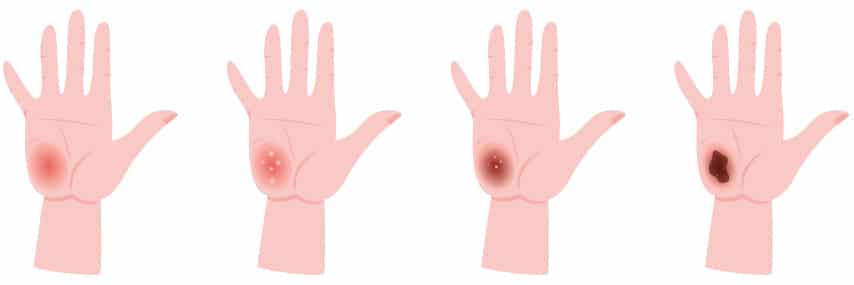

Prevalence
Nearly half a million people seek medication attention for burns every year in the U.S. and 8% of them require hospitalization. The prevalence of burn injuries is seven times higher in developing countries than in developed one. Infection is most common cause of morbidity and mortality in these patients, accounting for 61% of deaths.

Risk Factors
There are a number of risk factors for burn injuries including inadequate safety measures in occupations that increase exposure to hazards, underlying medical conditions such as epilepsy, peripheral neuropathy, physical and cognitive disabilities. Children are particularly vulnerable to burns.

Pathophysiology
Burns may be caused by fire, chemical, electrical and other physical agents. Wounds caused by burn injuries are characterized by inflammatory reaction, edema and necrosis depending on the extent and type of injury. In complex burns that cover more than 20-30% of total body surface area (TBSA), there is a systemic response due to extensive release of inflammatory mediators with far reaching effects, including systemic hypotension, bronchoconstriction, and reduced immune response.4

Assessment
Burn victims should be evaluated as trauma patients, using advanced trauma life support guidelines to identify and stabilize any life-threatening injuries.4 Burn specific evaluation should include size of the injury (TBSA), depth and mechanism of the injury.4 A burn specialist should be consulted for wounds that fail to progress towards healing.

Prevention and Treatment
Burns are preventable and incidence can be lowered with effective safety measures at workplace and home. Prevention strategies should address hazards, education for vulnerable population, and safety training for people working with chemicals, electricity and other worksite hazards. 1st and 2nd degree burns may be managed with nonadherent dressing and over-the-counter pain medication. For 3rd degree burns, skin grafting, and other skin procedures may be necessary.
References
- Latenser BA, Miller SF, Bessey PQ, et al. National Burn Repository: a ten-year review. J Burn Care Res. 2007: 28(5):635-58.
- World Health Organization. Burns Key Facts. 2018. https://www.who.int/news-room/fact-sheets/detail/burns.
- Gomez R, Murray CK, Hospenthal DR, et al. Causes of mortality by autopsy findings of combat casualties and civilian patients admitted to a burn unit. J AM Coll Surg. 2009: 208(3): 348-54.
- International Best Practice Guidelines: Effective skin and wound management of noncomplex burns. WoundsInternational, 2014.
